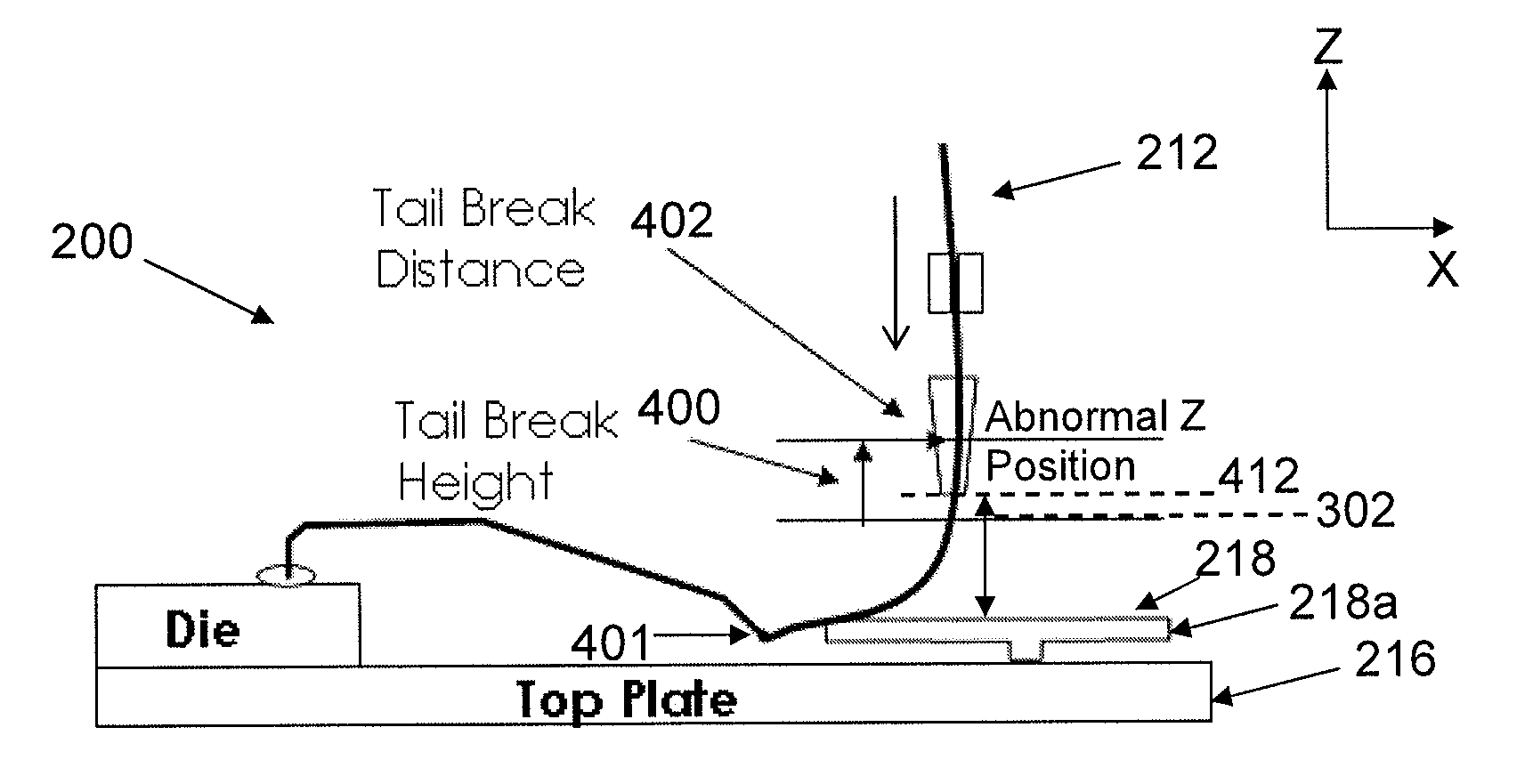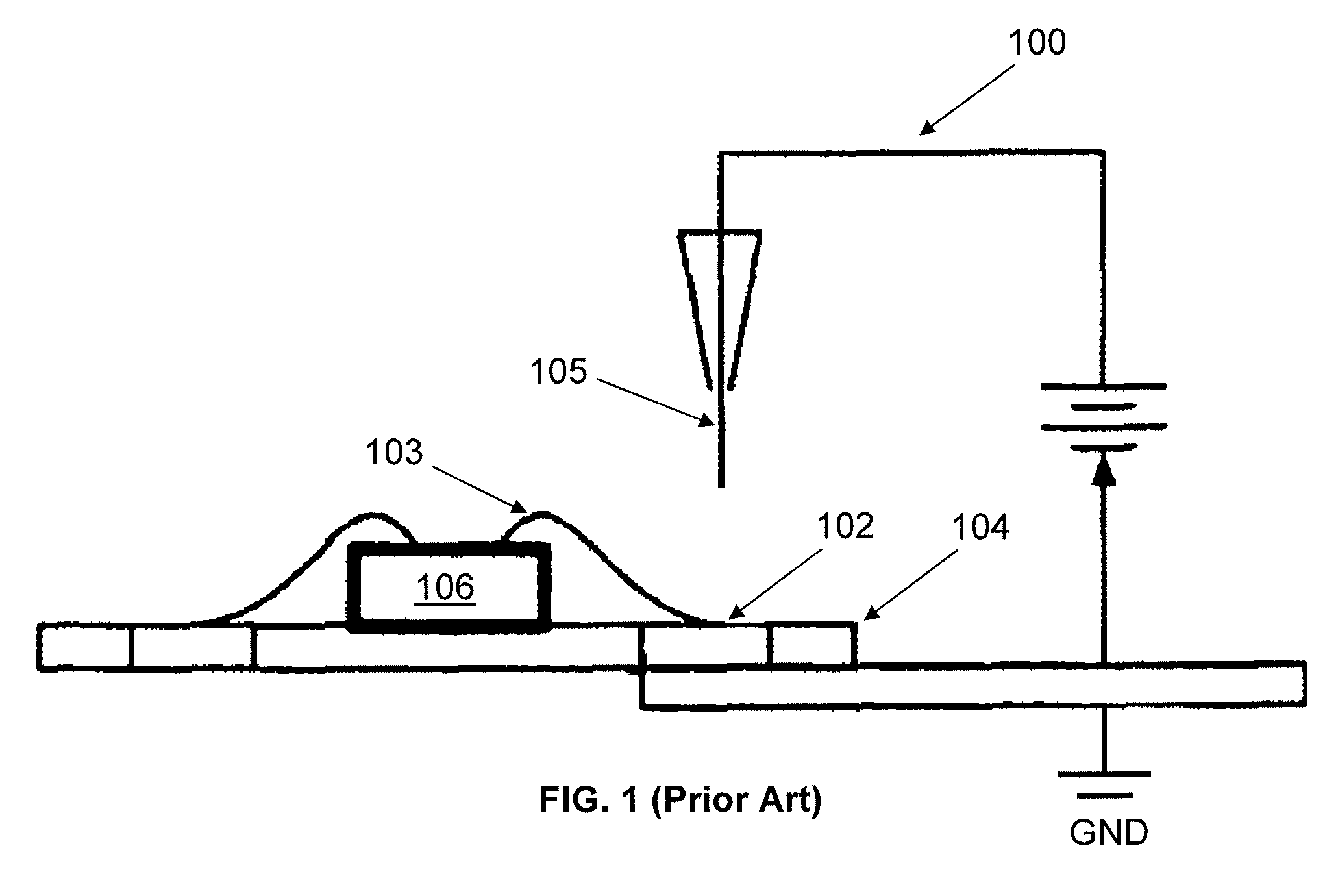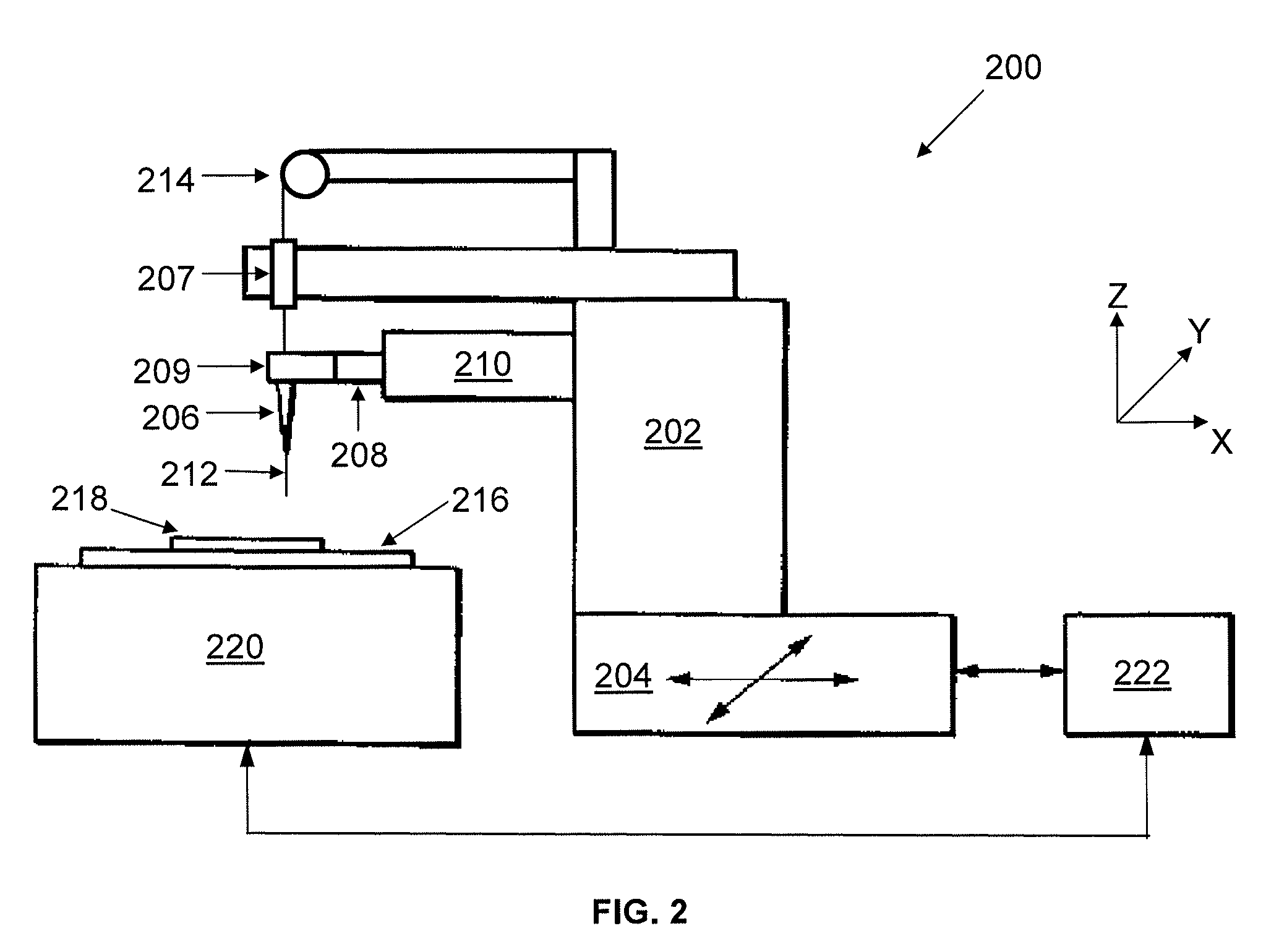Method of detecting wire bonding failures
a technology of failure detection and wire bonding, which is applied in the direction of solid-state devices, manufacturing tools, and soldering apparatus, etc., can solve the problems of non-stick-on-lead (‘nsol’) bonding failur
- Summary
- Abstract
- Description
- Claims
- Application Information
AI Technical Summary
Problems solved by technology
Method used
Image
Examples
Embodiment Construction
[0017]FIG. 2 shows a wire bonder 200 that is capable of detecting NSOL bonding failure according to a preferred embodiment of the invention. The wire bonder 200 comprises a bond head 202 connected to an XY table 204, which is in turn connected to a control device (shown as a personal computer 222) that controls the various parts of the wire bonder 200 during operation. A bonding tool (shown as a capillary 206), together with an ultrasonic transducer 208 and an ultrasonic horn 209, is connected to the bond head 202 via a bond arm 210 that extends from the bond head 202. A bonding wire 212 (e.g. Copper or Gold wire) from a wire spool 214 is introduced through a wire clamp 207 and the capillary 206. The wire bonder 200 also comprises a top plate 216 for supporting a substrate (shown as a lead frame 218) to which semiconductor dies (e.g. LED dies) are bonded. The top plate 216 is supported on a fixed table 220, which is also connected to the personal computer 222. During wire bonding, t...
PUM
| Property | Measurement | Unit |
|---|---|---|
| tail length | aaaaa | aaaaa |
| lengths | aaaaa | aaaaa |
| electrical | aaaaa | aaaaa |
Abstract
Description
Claims
Application Information
 Login to View More
Login to View More - R&D
- Intellectual Property
- Life Sciences
- Materials
- Tech Scout
- Unparalleled Data Quality
- Higher Quality Content
- 60% Fewer Hallucinations
Browse by: Latest US Patents, China's latest patents, Technical Efficacy Thesaurus, Application Domain, Technology Topic, Popular Technical Reports.
© 2025 PatSnap. All rights reserved.Legal|Privacy policy|Modern Slavery Act Transparency Statement|Sitemap|About US| Contact US: help@patsnap.com



